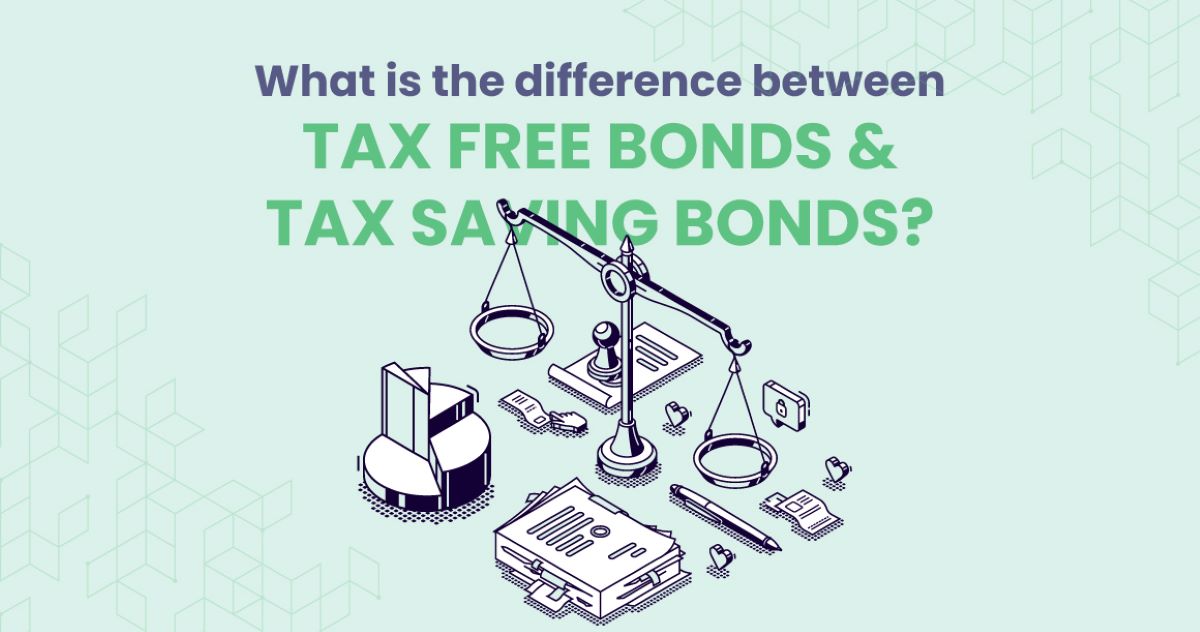

Finance
How Can I Avoid Paying Taxes On Savings Bonds
Modified: December 30, 2023
Save on taxes with savings bonds! Learn how you can legally minimize tax payments on your investments and boost your finance portfolio.
(Many of the links in this article redirect to a specific reviewed product. Your purchase of these products through affiliate links helps to generate commission for LiveWell, at no extra cost. Learn more)
Table of Contents
- Introduction
- Understanding Savings Bonds
- Taxation of Savings Bonds
- Strategies to Avoid Paying Taxes on Savings Bonds
- Utilize Education Savings Bond Program
- Consider Saving for Specific Qualified Expenses
- Timing the Redemption of Savings Bonds
- Rollover into Qualified Retirement Accounts
- Gifting Savings Bonds to Family Members
- Utilize Section 529 Savings Plan
- Conclusion
Introduction
Savings bonds are a popular investment option for individuals looking to grow their money while ensuring its safety. In addition to their low-risk nature, savings bonds also offer tax advantages. However, understanding the taxation rules surrounding savings bonds can be complex, and many investors are left wondering how they can avoid paying taxes on their savings bonds.
Before delving into strategies to minimize tax liability, it is important to have a clear understanding of what savings bonds are and how they are taxed. Savings bonds are issued by the U.S. Department of the Treasury and are considered a form of loan to the government. These bonds come in different types, including Series EE and Series I, each with its own set of features and interest rates.
When it comes to taxation, the interest earned on savings bonds is subject to federal income tax. However, they are exempt from state and local taxes, making them attractive to investors in states with high tax rates. The interest on savings bonds can be reported for federal income tax purposes in two ways: you can choose to report the interest each year as it accrues, or you can defer reporting until the bonds are redeemed or mature.
While paying taxes on savings bonds is inevitable, there are strategies you can employ to minimize your tax liability. By taking advantage of certain programs and understanding the timing of redeeming your savings bonds, you can potentially reduce or even eliminate the taxes owed.
In this article, we will explore several strategies that can help you avoid paying taxes on your savings bonds. From utilizing education savings bond programs to timing the redemption of your bonds strategically, there are several options to explore. By implementing these strategies, you can maximize the returns on your savings bonds while keeping your tax bill to a minimum.
Understanding Savings Bonds
Savings bonds are a type of investment issued by the U.S. Department of the Treasury. They are considered a safe and low-risk investment option, making them a popular choice among individuals looking to grow their savings. Understanding how savings bonds work is essential in navigating their taxation and optimizing your returns.
There are two main types of savings bonds: Series EE and Series I. Series EE bonds are sold at face value and accrue interest over time, while Series I bonds are indexed to inflation and offer a fixed interest rate plus an inflation adjustment. Both types of bonds have a maximum maturity period of 30 years.
When you purchase a savings bond, you are essentially lending money to the government. In return, the government pays you interest on the bond. The interest on savings bonds is usually compounded semiannually, meaning it is added to the bond’s principal every six months. This compounding feature allows your savings bonds to grow over time.
One unique characteristic of savings bonds is that they cannot be sold or transferred to other individuals. They can only be redeemed by the owner listed on the bond or in the case of a deceased owner, by the appointed beneficiary or the executor of the owner’s estate.
Another important aspect of savings bonds is their maturity period. The maturity period is the length of time it takes for a savings bond to reach its full face value. For example, a Series EE bond has a maturity period of 20 years, while a Series I bond has a maturity period of 30 years. It’s crucial to note that you can redeem your savings bonds before they reach their full maturity, although doing so may result in a penalty or loss of earned interest.
Lastly, it’s worth mentioning that savings bonds come with certain tax advantages. As mentioned earlier, savings bond interest is subject to federal income tax, but it is exempt from state and local taxes. This can be particularly beneficial for individuals living in states with high tax rates.
Having a solid understanding of how savings bonds function will not only enable you to make informed investment decisions, but it will also help you navigate the taxation rules associated with these bonds. This knowledge will be instrumental in implementing strategies to reduce your tax liability and make the most of your savings bond investments.
Taxation of Savings Bonds
Understanding the taxation rules surrounding savings bonds is crucial in managing your investment and minimizing your tax liability. While savings bonds offer tax advantages, it’s important to know how the interest earned on these bonds is taxed.
The interest earned on savings bonds is subject to federal income tax. However, you have the option to choose how you report the interest for tax purposes. The two methods available are:
1. Report annually: Under this method, you report the interest earned on your savings bonds each year as it accrues. This option allows you to spread out the tax liability over the life of the bond.
2. Deferred reporting: With deferred reporting, you don’t report the interest until the bond is redeemed, matures, or you otherwise dispose of it. This option allows you to delay paying taxes on the interest until a future date, providing a potential tax advantage if you are in a lower tax bracket when you eventually report the interest.
It’s important to note that regardless of the reporting method you choose, the interest on savings bonds is still subject to federal income tax. However, there are certain situations where you may be eligible for tax exclusions or deductions.
For example, if you use the proceeds from redeeming your savings bonds for educational expenses, you may be able to exclude the interest from your taxable income. This exclusion is available through the Education Savings Bond Program, which allows individuals to exclude all or a portion of the interest from their savings bonds if they use the funds for qualified higher education expenses.
Additionally, if you’re a first-time homebuyer, you may be eligible to exclude the interest earned on savings bonds if you use the bond proceeds towards purchasing, building, or rebuilding a qualified home.
It’s worth noting that while the interest on savings bonds is subject to federal income tax, it is exempt from state and local taxes. This can be advantageous if you live in a state with high tax rates, as you’ll only be responsible for paying federal taxes on the interest earned.
Understanding the taxation rules surrounding savings bonds is essential in managing your investments effectively. By being aware of the reporting methods, exclusions, and deductions available, you can strategically plan your savings bond investment to minimize your tax liability and maximize your returns.
Strategies to Avoid Paying Taxes on Savings Bonds
While paying taxes on savings bonds is inevitable, there are several strategies you can employ to minimize your tax liability and potentially avoid paying taxes altogether. These strategies can help you make the most of your savings bond investments while keeping more of your hard-earned money in your pocket. Let’s explore some effective strategies:
- Utilize Education Savings Bond Program: If you have savings bonds and plan to use the funds for higher education expenses, consider taking advantage of the Education Savings Bond Program. By using the bond proceeds for qualified education expenses, you may be eligible to exclude the interest from your taxable income entirely.
- Consider Saving for Specific Qualified Expenses: Another approach to minimizing taxes on savings bonds is to earmark the funds for specific qualified expenses. By planning your savings bond redemptions around expenses such as medical bills, home improvements, or other qualified expenses, you can potentially reduce or eliminate the tax liability on the interest earned.
- Timing the Redemption of Savings Bonds: The timing of redeeming your savings bonds can play a significant role in managing your tax liability. If you expect your income to be lower in a specific year, it may be beneficial to delay redeeming your savings bonds until that year. By doing so, you can potentially report the interest in a lower tax bracket and reduce your overall tax liability.
- Rollover into Qualified Retirement Accounts: If you have savings bonds that have reached maturity but you don’t need the funds immediately, consider rolling over the proceeds into a qualified retirement account, such as an IRA or a 401(k). By doing so, you can defer taxes on the interest earned until you withdraw the funds during retirement, potentially reducing your current tax burden.
- Gifting Savings Bonds to Family Members: Another strategy to explore is gifting your savings bonds to family members who may be in a lower tax bracket. By transferring the ownership of the bonds to relatives in lower income tax brackets, you can help minimize the tax liability on the interest earned.
- Utilize Section 529 Savings Plan: If you’re saving for a child’s or grandchild’s education, consider utilizing a 529 savings plan instead of savings bonds. Funds in a 529 plan grow tax-free and can be withdrawn tax-free when used for qualified education expenses, providing a tax-efficient alternative to savings bonds.
It’s important to note that when implementing any of these strategies, it’s advisable to consult with a financial advisor or tax professional. They can provide personalized guidance based on your financial situation and help you make informed decisions to optimize your savings bond investments while minimizing your tax liability.
Utilize Education Savings Bond Program
One effective strategy to minimize taxes on savings bonds is to take advantage of the Education Savings Bond Program. This program allows individuals to exclude all or a portion of the interest earned on their savings bonds from their taxable income if the funds are used for qualified higher education expenses.
Under the Education Savings Bond Program, you can exclude the interest from your savings bonds if you meet certain criteria. Here’s how it works:
- Owner Requirements: To qualify for the exclusion, you must be at least 24 years old before the bond’s issue date. The bonds must also be issued in your name, or if you’re married, they can be issued jointly with your spouse.
- Education Expense Requirements: The exclusion is only applicable if the bond proceeds are used for qualified higher education expenses. These expenses include tuition and fees for yourself, your spouse, or your dependents. It can also extend to cover expenses such as textbooks, supplies, and equipment required for education.
- Income Limitations: The amount of exclusion you can claim depends on your modified adjusted gross income (MAGI). There are income phase-out limits that determine your eligibility for the exclusion. It’s important to consult the IRS guidelines or a tax professional to understand the specific income thresholds for each tax year.
By utilizing the Education Savings Bond Program, you can exclude the interest earned on your savings bonds from your taxable income, reducing your overall tax liability. It’s important to keep detailed records of your education expenses and savings bond transactions to support the exclusion claim during tax filing.
It’s worth noting that if you do not use the bond proceeds for qualified education expenses, the interest will become taxable when you redeem the bonds. However, even if you don’t meet the requirements for the exclusion, savings bonds can still be a valuable savings instrument due to their low-risk nature and potential tax advantages compared to other investments.
Before implementing any tax strategy, it’s recommended to consult with a tax professional to ensure compliance with current tax laws and to fully understand the potential benefits and limitations of utilizing the Education Savings Bond Program.
Consider Saving for Specific Qualified Expenses
Another strategy to minimize taxes on savings bonds is to plan your redemptions around specific qualified expenses. By earmarking your savings bond funds for these expenses, you can potentially reduce or eliminate the tax liability on the interest earned.
Qualified expenses can vary depending on the type of savings bond and the specific criteria set by the IRS. However, some common qualified expenses may include medical bills, home improvements, or other eligible expenditures. It’s important to consult the IRS guidelines or a tax professional to determine which expenses qualify for your specific situation.
By saving for specific qualified expenses, you can strategically time your redemptions to coincide with when you have these expenses. This allows you to offset the interest earned on the savings bonds against the corresponding expenses, reducing your taxable income.
For example, if you plan to undergo a costly medical procedure, you can redeem your savings bonds to cover the medical expenses. By doing so, the interest earned on the bonds can be used as a deduction against the medical expenses, potentially reducing your overall tax liability.
Similarly, if you have planned home renovations or repairs, you can use the interest earned on savings bonds to fund these projects. By aligning your redemptions with the home improvement expenses, you can offset the interest income against the costs of the renovations, potentially reducing your taxable income.
It’s important to keep detailed records of your qualified expenses and savings bond redemptions, as these will be crucial when substantiating your deductions during tax filing. Proper documentation and record-keeping are essential to ensure compliance with tax regulations and to support any potential deductions you may claim.
Keep in mind that this strategy may not eliminate your tax liability entirely, as the principal amount of the bond is not deductible. However, by strategically planning your savings bond redemptions around qualified expenses, you can minimize the taxable component and potentially reduce your overall tax liability.
Before implementing this strategy, it’s advisable to consult with a tax professional to ensure that you understand the specific requirements and limitations, as well as to comply with current tax laws.
Timing the Redemption of Savings Bonds
The timing of redeeming your savings bonds can have a significant impact on your tax liability. By strategically timing the redemption of your bonds, you can potentially minimize the amount of taxable interest and optimize your overall tax situation.
One effective strategy is to time your savings bond redemptions to align with years when you anticipate being in a lower tax bracket. This can be particularly advantageous if you’re expecting a reduction in income due to factors such as retirement, a career break, or a lower-earning year.
By redeeming your savings bonds in a year with a lower income, you may be able to report the interest in a lower tax bracket, resulting in a reduced tax liability. This can be especially beneficial if you have a significant amount of accrued interest on your savings bonds.
It’s also important to consider the tax implications of redeeming savings bonds early versus at maturity. While savings bonds have a maximum maturity period of 30 years, you can choose to redeem them earlier. However, redeeming savings bonds before they reach maturity may result in a penalty, which can include the forfeiture of a portion of the accrued interest.
Before making a decision, it’s recommended to weigh the potential tax savings against the penalties for early redemption. Evaluate your financial situation, assess your anticipated tax bracket, and carefully consider whether redeeming the bonds early or waiting until maturity would be the most advantageous option for you.
Another factor to consider is your overall investment portfolio. If you have other investments that generate significant income or gains, strategically timing the redemption of your savings bonds can help balance out your overall tax picture and potentially optimize your tax liability.
Consulting with a financial advisor or tax professional can provide valuable guidance in assessing your specific situation, analyzing tax implications, and determining the ideal timing for redeeming your savings bonds to minimize taxes.
Remember to keep accurate records of your savings bonds, including purchase dates, maturity dates, and interest accruals. Having thorough documentation will be essential for correctly reporting the income and any potential penalties or deductions associated with the redemption of your savings bonds.
By carefully considering the timing of your savings bond redemptions, you can potentially reduce your tax liability and make the most of your investment.
Rollover into Qualified Retirement Accounts
Another strategy to consider when aiming to minimize taxes on savings bonds is to roll over the proceeds into qualified retirement accounts. By doing so, you can potentially defer taxes on the interest earned until you withdraw the funds during retirement.
Qualified retirement accounts, such as Individual Retirement Accounts (IRAs) or employer-sponsored 401(k) plans, offer tax advantages that can help optimize your savings bond investment.
Here’s how the rollover process works:
- Evaluate Eligibility: Determine if you’re eligible to contribute to a qualified retirement account based on the specific criteria set by the IRS and the rules of your employer’s retirement plan.
- Open a Retirement Account: If you don’t already have a qualified retirement account, open one that suits your needs. You can choose between a Traditional IRA or a Roth IRA, depending on your preferences and financial goals.
- Transfer the Savings Bonds: Request a direct transfer of the savings bond proceeds into your qualified retirement account. It’s important to ensure that the transfer is done directly to avoid any tax consequences.
- Deferred Taxation: By rolling over the savings bond proceeds into a qualified retirement account, you defer taxes on the interest earned until you withdraw the funds during retirement. This deferral can potentially help reduce your current tax burden.
One significant advantage of rolling over your savings bonds into a qualified retirement account is the potential for tax-free growth. Depending on the type of account you choose, the earnings on the savings bond proceeds within the retirement account can grow tax-free. This can provide a significant boost to your retirement savings over time.
It’s important to note that certain eligibility requirements, contribution limits, and tax implications apply to retirement accounts. Consulting with a financial advisor or tax professional is essential to understand the specific rules and to determine if rolling over your savings bonds into a retirement account aligns with your financial goals.
By leveraging the tax advantages of qualified retirement accounts, you can potentially defer taxes on the interest earned from your savings bonds and maximize your savings for retirement. Consider the long-term benefits and consult with financial professionals to make informed decisions regarding your retirement strategy and the rollover process.
Gifting Savings Bonds to Family Members
Another strategy to minimize taxes on savings bonds is to gift them to family members who may be in a lower tax bracket. By transferring ownership of the bonds to individuals in lower income tax brackets, you can potentially reduce the tax liability on the interest earned.
When you gift savings bonds to a family member, the recipient assumes ownership of the bonds and becomes responsible for reporting the interest on their tax return. If the recipient is in a lower tax bracket than you, the tax liability on the interest earned may be lower, resulting in potential tax savings.
It’s important to note that the gift transfer should be done correctly to avoid triggering any unintended tax consequences. Here are a few guidelines to follow:
- Gift Tax Considerations: Gifting savings bonds may have potential gift tax implications. As of 2021, you can gift up to $15,000 per year to an individual without triggering the gift tax. If you exceed this amount, you may need to file a gift tax return and potentially use a portion of your lifetime gift tax exclusion (currently $11.7 million for 2021).
- Document the Gift: Keep proper documentation of the gift transfer, including the date, the recipient’s information, and the value of the bonds at the time of gifting. This documentation will be necessary for tax purposes.
- Inform the Recipient: Ensure that the recipient understands the tax implications of owning the savings bonds and reporting the interest earned on their tax return.
By gifting savings bonds to family members in lower tax brackets, you can effectively shift the tax liability to individuals who may have a lower tax rate, potentially reducing the overall tax burden associated with the interest earned on the bonds.
It’s important to consult with a tax professional to fully understand the gifting process, gift tax regulations, and any potential tax consequences. They can provide guidance tailored to your specific situation and ensure compliance with applicable tax laws.
Note that this strategy focuses on transferring ownership of the bonds and does not involve redeeming the bonds. If the recipient chooses to redeem the gifted savings bonds, they will be obligated to pay taxes on the interest earned at their tax rate.
Gifting savings bonds to family members can be a tax-efficient way to pass on your investments while potentially minimizing the overall tax liability on the interest earned. Consider your family’s financial circumstances and consult with a tax professional to determine if this strategy aligns with your goals.
Utilize Section 529 Savings Plan
When it comes to saving for education expenses, utilizing a Section 529 savings plan can be a tax-efficient alternative to savings bonds. A Section 529 plan is a specialized savings account designed specifically for future education expenses, offering potential tax advantages for contributors and beneficiaries.
Here’s how a Section 529 savings plan can help minimize taxes and optimize your education savings:
- Tax-Free Growth: Contributions made to a Section 529 plan grow tax-free, meaning you won’t owe any federal taxes on the earnings as long as the funds are used for qualified education expenses. This tax-free growth can provide a significant advantage over savings bonds, where the interest is subject to federal income tax.
- Tax Deductions or Credits: Depending on the state you reside in, you may be eligible for additional tax benefits by contributing to a Section 529 plan. Some states offer deductions or credits for contributions made to the plan. Be sure to consult with a tax professional or review the specific guidelines for your state.
- Flexible Use of Funds: Funds within a Section 529 plan can be used for a wide range of qualified education expenses, including tuition, fees, books, supplies, and even certain room and board expenses. The flexibility in using the funds can help cover various educational needs without limitations.
- Transferable Benefits: If the intended beneficiary of the Section 529 plan decides not to pursue higher education or has leftover funds, you can transfer the savings to another eligible family member without incurring taxes or penalties on the earnings. This feature provides flexibility and ensures that the funds can still be used for educational purposes within the family.
By utilizing a Section 529 savings plan, you can take advantage of tax-free growth and potential state tax benefits, allowing you to optimize your savings for education expenses. Compared to savings bonds, which are subject to federal income tax on the interest earned, a Section 529 plan can provide a more tax-efficient approach to saving for education.
It’s important to note that the tax advantages of Section 529 plans are subject to certain rules and guidelines. It’s recommended to consult with a financial advisor or tax professional to understand the specifics of the plan and ensure compliance with applicable tax laws.
While savings bonds can still be a valuable component of an investment portfolio, especially for short-term goals or emergency funds, a Section 529 plan offers distinct advantages when it comes to saving for education expenses. Consider exploring this option to maximize your education savings while minimizing tax liabilities.
Conclusion
Navigating the taxation rules surrounding savings bonds can be complex, but with the right strategies, you can minimize your tax liability and optimize the returns on your investment. In this article, we explored several effective strategies to avoid paying taxes on savings bonds.
First, we discussed the Education Savings Bond Program, which allows you to exclude the interest earned on savings bonds from your taxable income if the funds are used for qualified higher education expenses. This program can provide significant tax savings for individuals pursuing a college education or those supporting family members’ educational goals.
We also explored the strategy of saving for specific qualified expenses. By planning your savings bond redemptions around qualified expenses such as medical bills or home improvements, you can potentially offset the interest income, reducing your taxable income.
Timing the redemption of savings bonds is another strategy to consider. By strategically redeeming your bonds during years when you anticipate being in a lower tax bracket, you can potentially minimize your tax liability and keep more of your investment earnings.
Rolling over savings bonds into qualified retirement accounts can be an effective way to defer taxes on the interest earned. By taking advantage of the tax advantages offered by retirement accounts, you can potentially maximize your savings and reduce current tax burdens.
Gifting savings bonds to family members in lower tax brackets is also worth considering. By transferring ownership to individuals with lower incomes, you can potentially reduce the tax liability on the interest earned and optimize the tax treatment of the bonds.
Lastly, we discussed the benefits of utilizing a Section 529 savings plan for education savings. These plans offer tax-free growth, potential state tax benefits, and flexibility in using the funds for qualified education expenses.
Remember to consult with a financial advisor or tax professional to ensure that these strategies align with your specific financial goals and comply with current tax laws. By implementing these strategies, you can make the most of your savings bond investments, minimize your tax liability, and work towards achieving your financial objectives.














